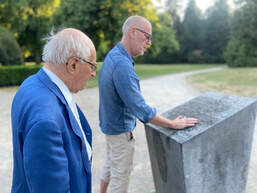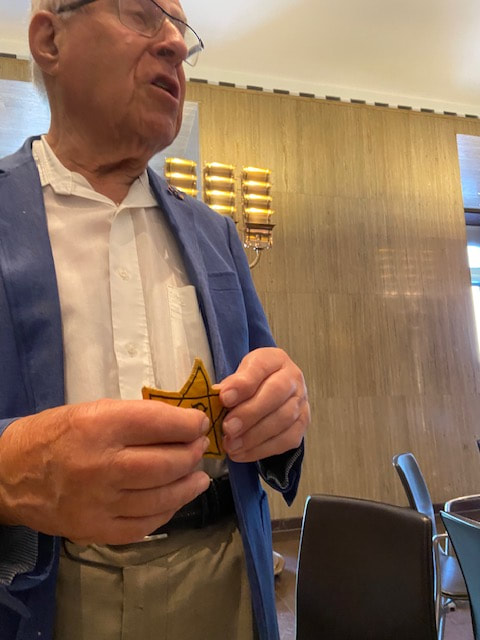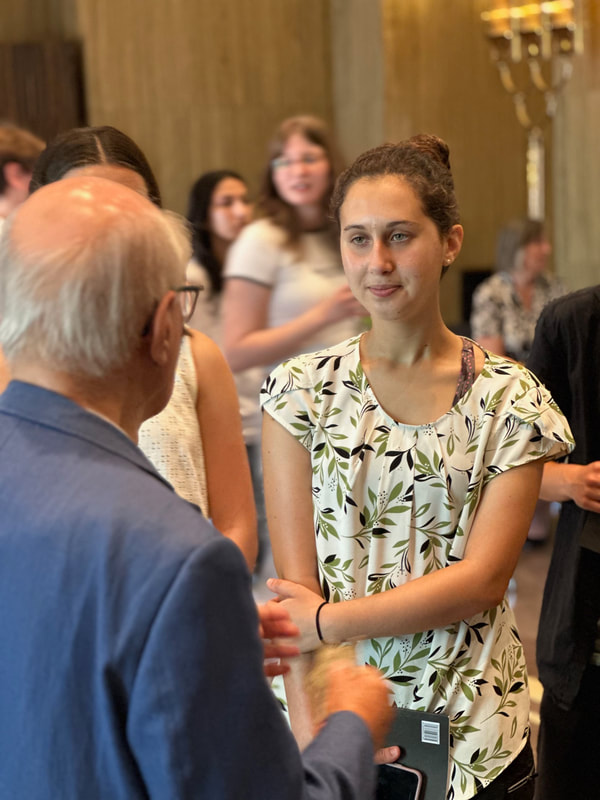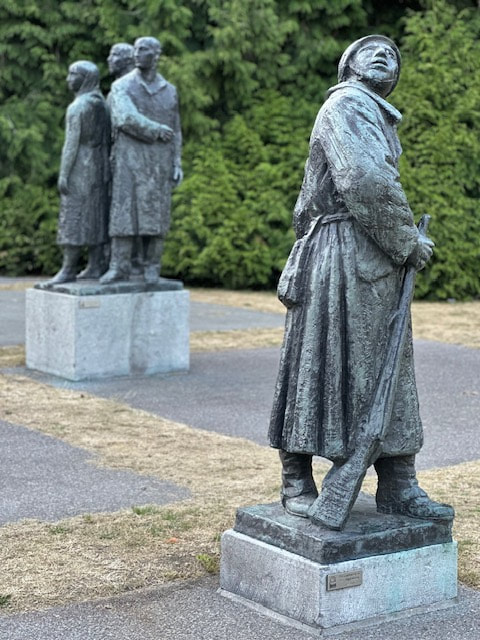|
Some people dismiss Sister Cities as a relic of the past, a hold-over from a post-World War II world when Sister Cities were created to build bridges across fractured borders. A June 2023 teen trip to Palo Alto’s Dutch Sister City served as a reminder that the past is not to be dismissed. Indeed, the past is often what matters the most. The one-week trip to Enschede was the culmination of a cross-border high school essay contest we launched last year to honor a little-known Dutch Resistance leader from Enschede, Pastor Leendert Overduin, who saved hundreds of Jewish children and their families during the Nazi occupation of the Netherlands in World War II, then later helped the children of imprisoned Nazi collaborators. The trip brought together essay contest winners from a four-way Sister and Sibling City network that included Enschede’s German Sister City, Münster, and Palo Alto’s Sibling City, Bloomington, Indiana. Looking at the group of students through the lens of World War II, these were the descendants of the invaded, the invaders, and the liberators, who gathered in Enschede to learn about the horrors of the past and contemplate the promises of the future. Here are two of my biggest history-focused takeaways from the week-long trip:  Today's Teens Do Care About History. Ok, maybe we had a self-selecting group – high schoolers who were motivated enough to enter a history-focused essay contest in the first place – but nevertheless, as a trip leader (along with fellow board member Ed Fike), I was worried beforehand that we’d have to endure a lot of yawns and disinterested expressions as the group toured sites of historical interest that helped tell the story of Pastor Overduin. It was quite hot on the day we visited the (unairconditioned) Enschede synagogue, a bustling center of worship before the Holocaust, now home to just 35 members. The tour did go on a bit too long and I had to stifle my own jet lag-induced yawns, even as I relished seeing what is often called Western Europe’s most beautiful synagogue. But our group of hot, tired teens hardly wavered. They asked questions. They listened. They made us proud. Not just at the synagogue, but at all points during the trip. The next day in Münster we learned about the signing of the Treaty of Westphalia. One of our students from Bloomington expressed actual awe that he was standing in the room where the famous treaty that ended the Thirty Years War was negotiated in the mid-1600s. Later, he explained to me how the treaty marked a watershed moment in the history of international relations – the first time in Western history that a war was ended through diplomacy. With this young man about to enter his first year at Georgetown, the history he experienced in Europe surely will inform his future studies. It is not hyperbole to say our interactions with these students truly inspired confidence in the next generation. Time is running out on our ability to learn from the survivors of the Holocaust. Some of the most poignant and powerful moments of the week came from our interactions with Enschede residents Herbert Zwartz and Bert Woudstra, both well into their 90s and still speaking to schools about their experiences surviving the Holocaust in and around Enschede. These men survived thanks in great part to Pastor Overduin and other members of the Resistance who helped hide their families and brought them precious ration cards. During our welcome reception at Enschede City Hall, Herbert pulled from his pocket the gold Star of David he was forced to wear after the Nazis marched across the border. (At the time of the war, Enschede was one of Europe’s textile centers and at least one of the city's mills was requisitioned to manufacture those very stars.) It is one thing to read about the Holocaust in a textbook. It is quite another to stand in front of a survivor, in a town the Nazis took just 83 years ago, and hear his stories. A living bridge to the history we were there to learn about, Herbert was yet another reminder of the relevance of the past. He was also a ton of fun, zipping Ed and me around town in his snazzy car and taking us to an al fresco dinner in Enschede’s main park, along with Willy Berends, who made the documentary film about Pastor Overduin, and artist Sonna Krom, whose evocative sketches helped illustrate portions of the film. It was one of those meals you know before the entrees even arrive that you will remember forever. The wine flowed and a cool breeze took the edge off the hot day. Herbert told us jaw-dropping stories about a post-war job he took in a textile factory in the American South. He came up with witty retorts to Willy and Sonna’s own jaw-dropping stories about their travels in the American South. He told us about his many great-grandchildren and the son who continues to run his family business: Enschede’s only remaining textile mill. As Herbert dropped us off at our hotel, he smiled knowingly through our awkward “we hope to see you again” parting. His age and the miles between us meant this was likely the last time we’d see our new friend. Ed and I both had tears in our eyes. The poignancy was palpable. Herbert and Bert are among the few who remain. History matters. Sister Cities are as relevant as ever. Let’s not forget. To see a few photos from the Overduin Essay Contest trip, click here. You can learn more about the contest and Pastor Overduin here and also watch the documentary by Willy Berends.
2 Comments
Herbert Zwartz
7/19/2023 12:40:30 am
Wonderful story about the trip Neighbours Abroad organised!
Reply
8/1/2023 07:13:52 pm
Great article! Well written and great initiative. I really like the idea of dual bridges: one to the past, so that we don't forget it, and the other to a different culture and people, so that we become more sensitive to our differences.
Reply
Leave a Reply. |
Neighbors Abroad BlogMusings and Missives for a Small World Archives
March 2024
Categories |
|
ABOUT NEIGHBORS ABROAD
Neighbors Abroad fosters Palo Alto's domestic and international engagement through friendship, education, commerce, and sustainability. We are a 501(c)(3) nonprofit organization. |
ORGANIZATION
Neighbors Abroad 355 Alma Street Palo Alto, CA 94301 Phone: (650) 503-3343 EIN: 94-6103013 |




 RSS Feed
RSS Feed